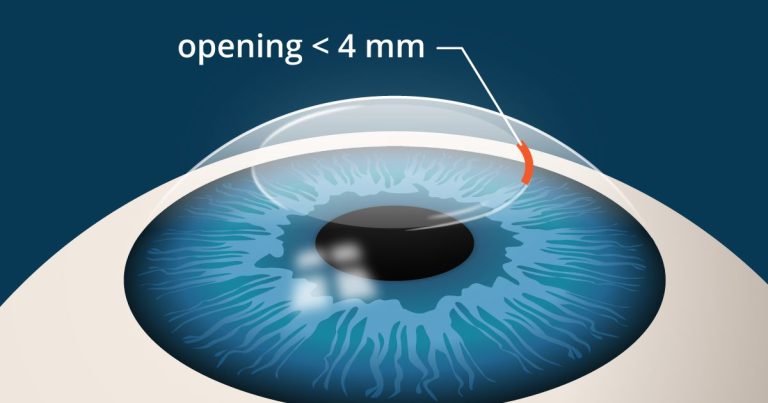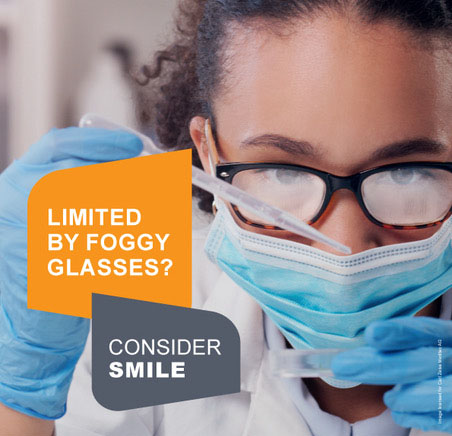SMILE
SMILE Eye Surgery
SMILE is a type of laser eye surgery that helps fix problems like astigmatism and nearsightedness. It can let you stop using glasses or contacts. But you need to fit certain rules to be able to have this surgery.
Small Incision Lenticule Extraction (SMILE) Eye Surgery for Vision Correction
Since LASIK surgery became widely available, there have been improvements. In 2012, a new procedure called SMILE was introduced. This procedure also helps with vision problems, but instead of making a flap on the eye, it removes a small part of the cornea using a special laser. This makes it less invasive, with a smaller cut, usually between 2 to 4 millimeters.

What Is SMILE Eye Surgery?
SMILE eye surgery helps fix problems like astigmatism and nearsightedness by using a special laser to reshape your cornea. It’s called “SMILE” because the process involves making a tiny cut in your eye (less than 4 millimeters long) and removing a small, disc-shaped piece of tissue called a lenticule. This piece is like the shape of an M&M® candy. By taking out this piece, the laser changes the shape of your cornea, which helps you see better without glasses or contacts. It’s a straightforward surgery that doesn’t need big cuts, making it easier for you to recover.
Benefits of SMILE
SMILE is a procedure using a special laser to create two layers in the cornea and shape a small piece called a lenticule. This piece determines how much vision correction is needed. Then, a tiny cut, about 2 to 4 mm long, is made to remove the lenticule. The goal of this technology is to lower the risk of dry eyes and keep the cornea strong. Some research says it works well for these issues, but other studies say it doesn’t change much.
What happens during a SMILE procedure?
- During a SMILE procedure, the eye is numbed with drops, and a tool is used to keep the eyelids open. Then, a special laser creates a small, precise piece of tissue in the eye, which is removed through a tiny cut. The entire process typically takes about 10 to 15 minutes, with the laser being active for only a short period.
- After the laser part, patients usually have a brief recovery period to rest and ensure they're comfortable. The eye doctor then checks the eye to make sure everything looks good before allowing the patient to leave.
- It's a relatively quick and efficient procedure, offering vision correction for issues like nearsightedness. Many patients find it less invasive than other types of eye surgeries and experience a relatively smooth recovery afterward.
Recovery after SMILE eye surgery
Recovery of vision after SMILE surgery is slower compared to Contoura and other Lasik procedures, according to a 2018 article by Dr. R.L Rebenitsch in the American Academy of Ophthalmology. Patients might not experience the “WOW effect,” which is the quick improvement in vision clarity within 30 minutes of the procedure.
How safe is the SMILE procedure?
SMILE, which stands for Small Incision Lenticule Extraction, is a safe and FDA-approved medical procedure in the United States. Typically, it’s recommended for individuals aged 22 and older, following guidelines set by the US FDA. Before undergoing the procedure, patients will undergo a series of tests to assess their suitability. Generally, those who are suitable candidates for LASIK are also likely to be good candidates for SMILE.
How successful is SMILE eye surgery?
A study on people who had SMILE surgery found that almost everyone, 99%, had at least decent vision (20/40) six months after the surgery. Additionally, 88% of them had perfect vision (20/20) during their six-month check-up.




Additional Details
Is SMILE eye surgery safer than LASIK?
Both SMILE and LASIK eye surgeries are known for their safety. One advantage of SMILE is its less invasive nature compared to LASIK. Additionally, there is a lower risk of damaging nerves or tissues during the SMILE procedure. Another benefit of SMILE is that it typically results in faster recovery times for patients. Moreover, SMILE has been shown to have excellent long-term outcomes in terms of vision correction. Overall, while both procedures are safe options for improving vision, SMILE offers certain advantages that make it a preferred choice for some individuals.
Frequently Asked Questions
he experience of Laser Vision Correction is not difficult or painful. However, it is normal to be nervous – you will be given the option of a mild sedative to help you remain calm. The procedure itself takes about 15 minutes. Your surgeon will operate on one eye at a time, while the other eye is covered.
Small incision lenticule extraction (SMILE) is a newer type of laser refractive surgery. This kind of surgery uses a laser to treat myopia (nearsightedness) and astigmatism (irregularly shaped cornea). For you to see clearly, light rays must travel through your cornea and lens.
At Envision Lasik Centre, we weave precision, safety, and unparalleled patient care into the fabric of every vision journey, guaranteeing a seamless and triumphant experience for all. Rely on us for avant-garde technology, seasoned surgeons, and a steadfast dedication to illuminating lives with crystal-clear vision.


